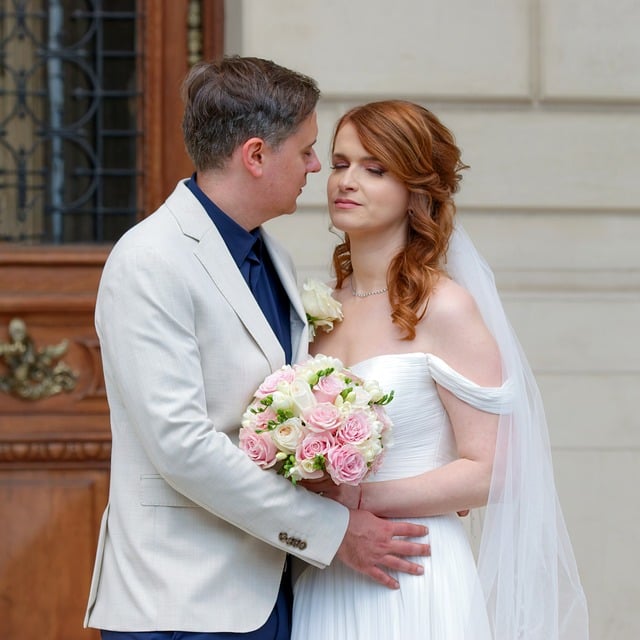Wedding Photos: Planning, Poses, and Practical Tips
A wedding album captures moments, emotion, and small details that matter long after the day ends. Thoughtful planning, clear communication with your photographer, and a few simple posing and timing strategies help ensure photographs reflect the personality of the couple and the flow of the celebration. This article covers practical advice for wedding photography, from pre-ceremony preparation to portraits of the bride and groom, and how to find local services that fit your needs.

What should you expect from wedding photography?
Expect your wedding photography to document a mix of candid moments, posed portraits, and detail shots. A typical timeline includes getting-ready images, ceremony coverage, group portraits, couple portraits, and reception highlights. Discuss with your photographer which moments are priorities—some couples favor documentary-style coverage while others want a structured portrait session. Ask about deliverables such as edited digital files, an album option, turnaround time, and whether the photographer provides a second shooter to capture simultaneous angles.
How can a couple prepare for photo sessions?
Preparation makes couple portraits smoother and more relaxed. Schedule portrait time during a part of the day with flattering light—often the hour before sunset (golden hour) or just after the ceremony if time allows. Practice a few poses at home so you feel less self-conscious, and coordinate clothing and accessories for visual harmony. Communicate any must-have shots to your photographer in advance, and build a flexible timeline that allows for brief outfit or location changes. A relaxed couple tends to yield more natural expressions, so plan a few quiet moments together between formalities.
What should the bride consider for wedding photos?
The bride’s attire and preparation often shape specific photo opportunities. Work with your stylist and photographer on timing for hair and makeup so there’s time for detail shots of the dress, shoes, and accessories. Consider transportation and dress bustle logistics for moving between locations without wrinkling or damaging fabric. Bridal portraits can be taken in the wedding gown before the ceremony to capture the full dress and veil in controlled light. Bring a small emergency kit: safety pins, stain remover wipes, and a needle and thread for quick fixes that would otherwise disrupt photos.
Additional bridal considerations include practicing poses that highlight comfortable angles—subtle adjustments to posture can affect how the dress falls and how hands appear in photos. If you plan on changing outfits, coordinate this into the schedule so both looks receive attention without rushing other events.
What should the groom plan for photos with the bride?
Groom preparation supports smooth couple portraits and group shots. Ensure the suit or tuxedo is properly fitted and pressed; small fit issues are noticeable in close-up images. Coordinate accessories—tie, boutonniere, cufflinks—with the bride’s color palette so shots read cohesively. Plan pockets and items to avoid in shots: avoid bulky wallets or visible tags. During portraits, simple prompts from the photographer—walking slowly, leaning in, or whispering—produce genuine interactions that translate well in images.
For group photos, compile a list of family combinations beforehand to streamline the process. Assign a point person who can help gather relatives and wedding party members so the groom and bride aren’t held up with logistics. This practical step saves time and keeps the atmosphere relaxed for better candid moments.
How to choose wedding photography local services in your area?
Choosing local services starts with researching portfolios to assess style consistency and image quality. Look for photographers who shoot similar venues or lighting conditions to your wedding (indoor, outdoor, low light). Read reviews, request full wedding galleries rather than just highlight reels, and meet (or video-call) potential photographers to discuss personality fit and timeline management. Ask about licensing, insurance, backup equipment, and contingency plans for emergencies.
When comparing packages, clarify what’s included: hours of coverage, second shooters, engagement sessions, retouching, digital rights, and album options. Ask about travel fees for locations outside their usual area. If you have venue constraints, verify that the photographer is familiar with the space or plans to scout it in advance. Clear contracts that define deliverables, payment schedule, and cancellation policies reduce misunderstandings.
Conclusion
Wedding photos serve as a lasting record of a day filled with connection and detail. By clarifying priorities, preparing attire and timing, rehearsing natural poses, and vetting local services, couples can shape a photography experience that documents both the staged moments and the spontaneous interactions. Thoughtful communication with your photographer and a flexible timeline often produce the most genuine and enduring images.






